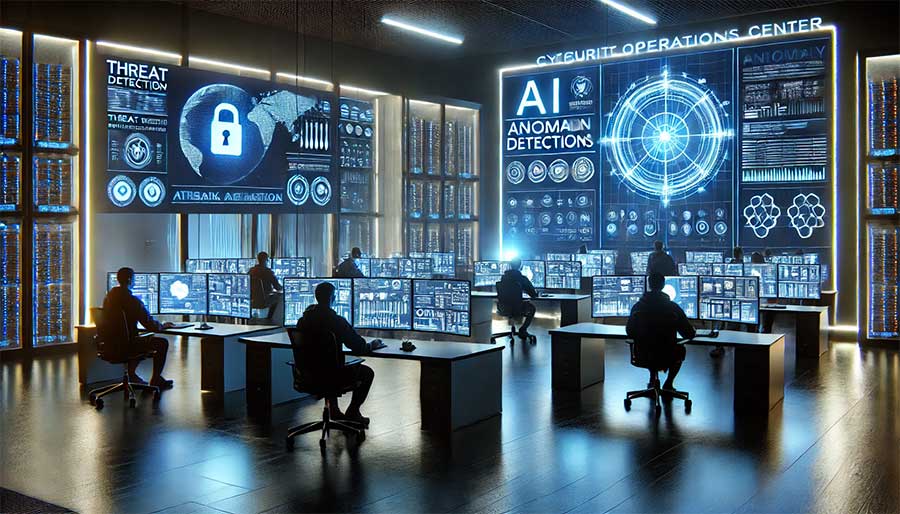As cyber threats become more sophisticated, traditional Security Operations Centers (SOCs) struggle to keep up with the sheer volume of security alerts and complex attack techniques. To address this challenge, AI-driven SOCs (AI SOCs) have emerged, integrating Artificial Intelligence (AI) and Machine Learning (ML) to enhance threat detection, response, and overall cybersecurity efficiency.
What is an AI SOC?
An AI SOC (Artificial Intelligence Security Operations Center) is an advanced SOC that utilizes AI and ML to automate security monitoring, analyse vast amounts of data in real-time, and respond to cyber threats with greater speed and accuracy. AI SOCs significantly reduce the workload on human analysts by filtering out false positives and automating routine security tasks.
Key Features of an AI SOC
1. Automated Threat Detection & Anomaly Identification
- AI-driven systems analyse logs, network traffic, and user behaviour to detect anomalies.
- Behavioural analysis helps identify unknown threats that traditional rule-based systems may miss.
- AI reduces false positives by continuously learning from historical data.
2. Incident Response & Automation
- Security Orchestration, Automation, and Response (SOAR) tools use AI to execute predefined response actions.
- Automated playbooks help contain and mitigate threats without manual intervention.
- AI assists in forensic investigations by correlating security events and identifying root causes.
3. Threat Intelligence & Predictive Analysis
- AI integrates with threat intelligence feeds to proactively identify emerging threats.
- Predictive analytics help security teams prepare for potential cyberattacks before they occur.
- AI enhances vulnerability management by prioritizing security patches based on risk assessment.
4. Reducing Analyst Fatigue & Improving Efficiency
- AI helps SOC analysts by prioritizing critical security alerts.
- Natural Language Processing (NLP) summarizes threat reports, making it easier for analysts to assess incidents quickly.
- AI-driven chatbots and virtual assistants provide instant insights and guidance to security teams.
Core Technologies in an AI SOC
- Security Information and Event Management (SIEM) – Collects, analyzes, and correlates security logs.
- User and Entity Behaviour Analytics (UEBA) – Detects anomalies in user and system behaviours.
- SOAR (Security Orchestration, Automation, and Response) – Automates incident response workflows.
- Machine Learning-Based Threat Hunting – Identifies sophisticated cyber threats hidden within normal activities.
Benefits of an AI SOC
- Faster Threat Detection – AI processes data in real time to detect threats instantly.
- Lower False Positives – Machine learning reduces noise by refining alert accuracy.
- Automated Incident Response – AI-driven playbooks mitigate attacks swiftly.
- Reduced Analyst Workload – AI handles repetitive tasks, allowing analysts to focus on complex issues.
- Proactive Cybersecurity – Predictive analytics prevent attacks before they occur.
Will AI Replace Human SOC Analysts?
No. AI SOCs are designed to augment, not replace, human analysts. While AI automates repetitive tasks and enhances efficiency, cybersecurity still requires expert decision-making, contextual understanding, and strategic thinking. The combination of AI-driven automation and human expertise creates a more effective and resilient SOC.
AI SOCs represent the future of cybersecurity by leveraging artificial intelligence to detect, analyze, and respond to cyber threats more efficiently than ever before. As cyber risks continue to evolve, organizations adopting AI-powered SOCs will have a significant advantage in defending against sophisticated attacks.
Would you like to implement an AI SOC for your organization? Start exploring AI-driven security solutions today to stay ahead in the cybersecurity landscape!

